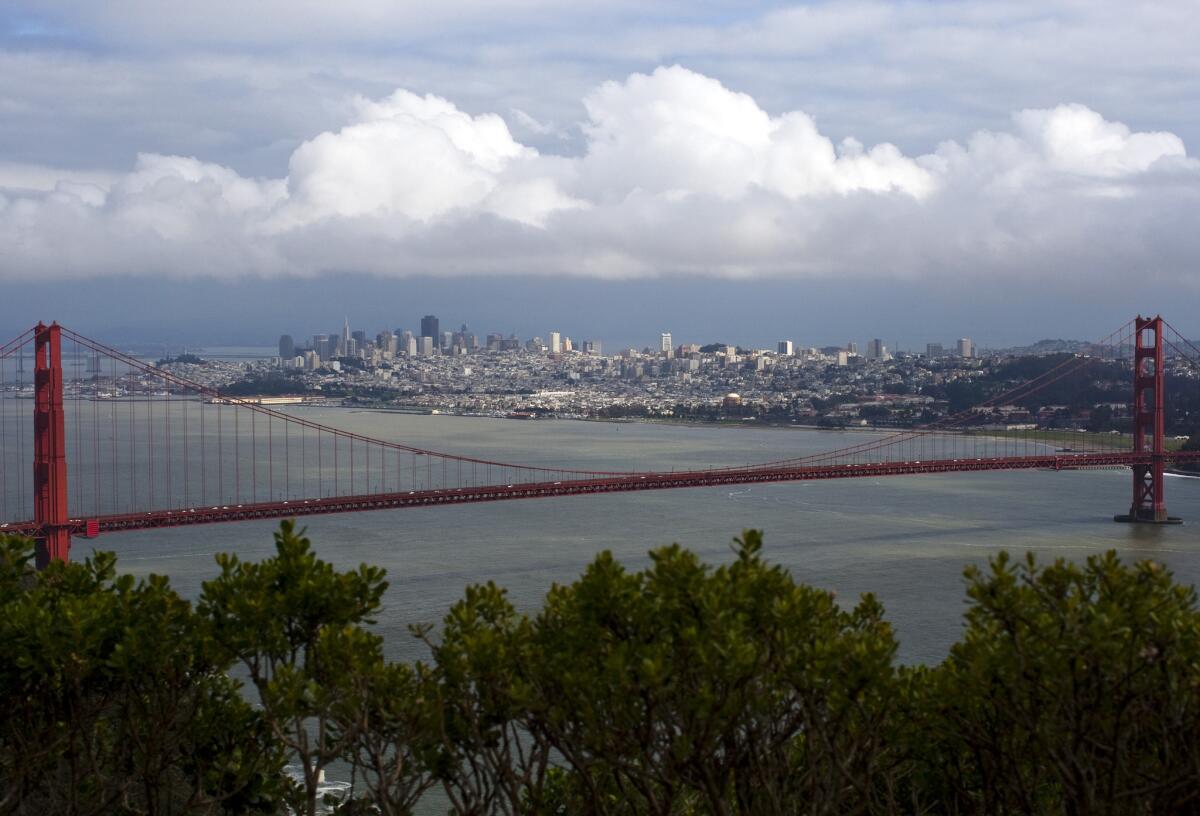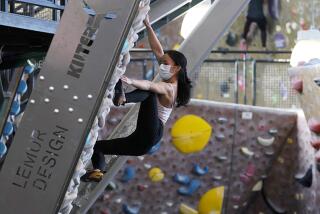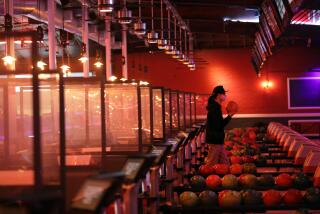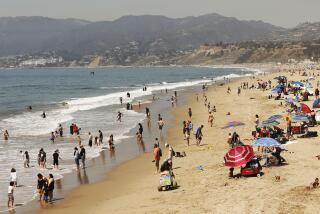San Francisco and at least two other Bay Area counties plan to partially reopen Monday

- Share via
MENLO PARK — At least three Bay Area counties — San Francisco, San Mateo and Marin — plan to incrementally ease their social distancing restrictions starting Monday, a departure from Santa Clara County, which on Tuesday said it would not be easing its current restrictions.
San Mateo previously issued some of California’s most stringent shelter-in-place orders, but county health officials said Wednesday that conditions had improved enough to modify the requirements.
“I want to remind everyone these modifications are not being made because it is safe to be out and about,” said Scott Morrow, the county’s public health officer, in a statement. “The virus continues to circulate in our community, and this increase in interactions among people is likely to spread the virus at a higher rate.”
In San Francisco, Mayor London Breed announced Wednesday that all curbside retailers would be allowed to reopen as of May 18 for pickup and delivery.
She had cautioned for weeks that San Francisco would be slow to reopen. But at a news conference, she said the city’s next phase meant that 95% of San Francisco’s retailers would be allowed to open starting Monday. Warehouses and manufacturers are also allowed to reopen, but the city has imposed a limit on the number of employees allowed in each business.
“We do see the numbers flattening,” Breed said. “They have not declined, but the fact is we are in a better place.” She said hospitalizations for COVID-19 remained flat and hospital capacity was stable.
Dr. Grant Colfax, director of health for the city, said San Francisco’s mortality rate was four times lower than that of Los Angeles and 35 times lower than New York City’s.
“Thank you, San Francisco, for doing everything you can to slow the spread of the coronavirus here in San Francisco and the Bay Area as well,” he said.
Retailers open for curbside pickup are allowed to have no more than 10 employees on site; if the store is small, no more than five. Manufacturers and warehouses may have no more than 50 workers on site, he said.
All open businesses must ensure social distancing, mask-wearing and have in place a health and safety plan, he said.
On Tuesday, Dr. Sara Cody, a key architect of the nation’s first regional shelter-in-place order, told Santa Clara County officials it was too soon to move to a Phase 2 reopening along with much of the rest of the state.
“The conditions really haven’t changed in our county,” she said. “We don’t suddenly have herd immunity; we don’t have a vaccine. We have exactly the same conditions as we did in March.”
Cody described Santa Clara County as precariously balanced. The outbreak is steady — neither seeming to grow dramatically or reduce considerably. For every one person infected, that person on average infects one other person. If that number, known as the basic reproduction number, rose slightly to 1.1 or 1.2, that would cause a significant rise in deaths, Cody said.
Toward a more sustainable California
Get Boiling Point, our newsletter exploring climate change, energy and the environment, and become part of the conversation — and the solution.
You may occasionally receive promotional content from the Los Angeles Times.
Contra Costa County is also not ready to weaken its stay-at-home order, Dr. Chris Farnitano, health officer for the Bay Area’s third most populous county, said Tuesday.
“We are not yet where we want to be before a fuller opening up of the stay-at-home order,” Farnitano told the Contra Costa County Board of Supervisors, which governs a county of 1.1 million people east of Oakland.
Farnitano said he’d like to have a few weeks pass to observe the effects of an earlier loosening of stay-at-home orders that went to effect on May 4, which lifted restrictions on all construction projects and allowed certain businesses that do work outdoors to resume, like gardeners, landscapers and nurseries.
“We wanted to … see the effect of this increased business and social activity on the spread of COVID-19 across the Bay Area before substantial loosening of additional business sectors,” such as allowing local retail businesses to be opened up for curbside pickup, Farnitano said.
Dr. Matt Willis, health officer for Marin County, said earlier this week Marin County is prepared to allow retail businesses to open for curbside pickup on Monday. But Willis, who was previously infected by the virus, warned that Marin County may need to reverse course if it sees a surge in cases.
Marin County has reason to be worried — the average age of its residents is the oldest of any California county, with almost 1 in 3 residents older than 60 years of age, Willis said.
Marin County, with a population of 260,000 people, tied for ninth place in terms of the most numbers of deaths per 100,000 residents of California’s 58 counties, Willis said Monday, which showed a rate of 5.4 of every 100,000 residents dead from COVID-19. That’s a worse rate than in San Francisco and Alameda counties.As of Wednesday, 14 people in Marin County had died from the virus.
An early morning text. A lawyer-filled meeting on a Sunday afternoon. Emotional journal entries. And, ultimately, action.
“The most important thing is that we recognize that reopening does not mean the virus has gone,” Willis said. “It means that we think we are prepared to take the next step: Knowing the virus is here and that we remain at risk. We have no zero risk options. … We will define success in this next stage as finding the balance between the harms of an ongoing restricted shelter-in-place [and] the harms of COVID-19 spread.”
The Alameda County Public Health Department said in a statement released Tuesday that it’s possible the agency would allow additional approved activities for local businesses starting Monday.
Sonoma, Napa and Solano counties last week implemented the relaxations allowed by Newsom and have allowed nonessential retail business to make sales by curbside pickup, while easing restrictions on manufacturing, supply chain and logistical support businesses.
Gov. Gavin Newsom outlined the guidance for Phase 2 reopening, which allows for curbside pickup at strip malls and outlet malls, as well as the opening of car-washing facilities, pet-grooming services, and landscaping businesses — as long as social distancing rules and other guidelines are put into effect. Outdoor museums can also begin to reopen.
Los Angeles County has already allowed some portions of local economy to reopen as Newsom has allowed, allowing stores selling books, clothes, flowers and sporting goods to open for curbside pickup on Friday. On Wednesday, L.A. County continued easing restrictions, allowing more retailers to open for pickup service and manufacturing companies that supply those stores.
Twelve of California’s 58 counties, most of them rural,, have been certified as meeting stricter state criteria to allow for an even broader reopening of businesses faster than the statewide standard, like restaurant dining rooms and allowing in-store customers at shopping centers, including strip malls and outlet malls, while operating with additional safeguards.
Amador, Butte, El Dorado, Lassen, Nevada, Placer, Plumas, Sierra, Tuolumne, Yuba, Sutter and Shasta have been certified as meeting the state’s conditions for additional businesses to reopen.
Times staff writers Hannah Fry, Patrick McGreevy and Colleen Shalby contributed to this article.
More to Read
Sign up for Essential California
The most important California stories and recommendations in your inbox every morning.
You may occasionally receive promotional content from the Los Angeles Times.













